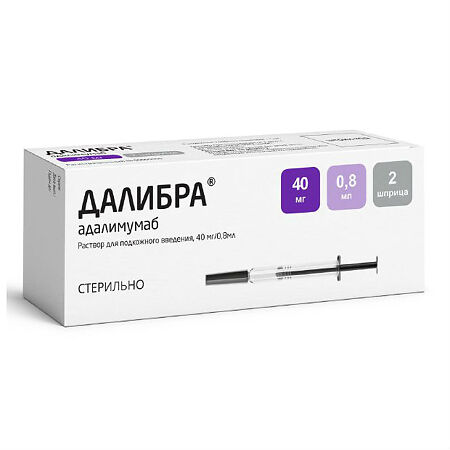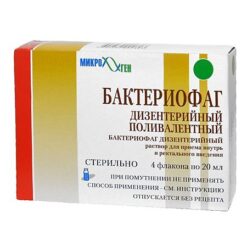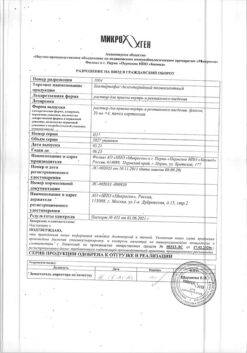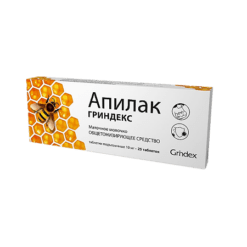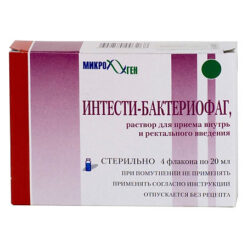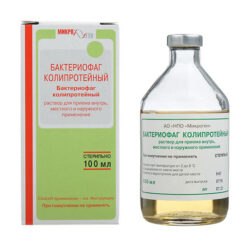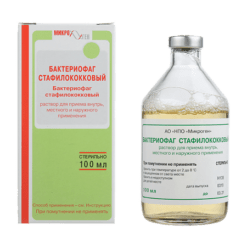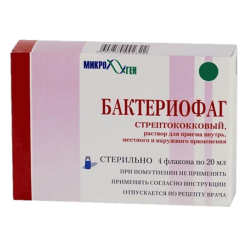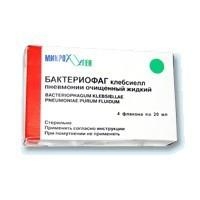No products in the cart.
Dalibra, 40 mg/0.8 ml 0.8 ml syringes 2 pcs
€1.00
Out of stock
(E-mail when Stock is available)
Description
Pharmacotherapeutic group
Immunosuppressive agent.
ATX code:
L04AB04
Pharmacological properties
Mechanism of action
Adalimumab is a recombinant monoclonal antibody whose peptide sequence is identical to human IgG1.
Adalimumab binds selectively to tumor necrosis factor alpha (TNF-a) and neutralizes its biological functions by blocking its interaction with the surface cell p55 and p75 receptors for TNF-α. TNF-α is a natural cytokine that participates in the regulation of normal inflammatory and immune response.
Elevated concentrations of TNF-α are found in the synovial fluid of patients with rheumatoid arthritis (RA), psoriatic arthritis (PsA) and ankylosing spondylitis (AS). TNF-α plays an important role in the development of pathological inflammation and articular tissue destruction characteristic of these diseases. Elevated concentrations of TNF-α are also found in psoriatic plaques.
In plaque psoriasis, treatment with adalimumab can lead to a reduction in plaque thickness and infiltration by inflammatory cells. A relationship between this clinical effect of adalimumab and its mechanism of action has not been established.
Adalimumab also modulates biological responses that are enhanced or regulated by TNF-α, including changes in levels of adhesion molecules that cause leukocyte migration.
Pharmacodynamics
In patients with rheumatoid arthritis, adalimumab caused a rapid decrease in the concentration of acute phase indicators of inflammation (C-reactive protein (CRP) and erythrocyte sedimentation rate) and serum concentration of cytokines (interleukin-6).
Decreases in CRP concentrations were also observed in patients with juvenile idiopathic arthritis, Crohn’s disease, ulcerative colitis, and active purulent hydradenitis. In addition, there was a decrease in serum activity of matrix metalloproteinases (MMP-1 and MMP-3), which cause tissue remodeling that underlies cartilage destruction.
Pharmacokinetics
Adalimumab is absorbed and distributed slowly and reaches its maximum serum concentration after approximately 5 days. The absolute bioavailability of the drug with a single subcutaneous injection of 40 mg of adalimumab is 64%.
Distribution and excretion
The volume of distribution (Vd) with a single intravenous injection is 4.7 to 6.0 L, indicating that adalimumab is almost equally distributed in blood and extravascular fluids. Adalimumab is excreted slowly, the clearance (C1) usually does not exceed 12 ml/h.
The elimination half-life (T1/2) averages 2 weeks and varies from 10 to 20 days. The C1 and T1/2 do not change significantly with doses of 0.25-10 mg/kg, and the T1/2 is similar with intravenous and subcutaneous administration of adalimumab. The concentration of adalimumab in synovial fluid in patients with rheumatoid arthritis is 31% to 96% of that in serum.
The pharmacokinetics of adalimumab in equilibrium
Equilibrium concentrations of adalimumab when administered subcutaneously at a dose of 40 mg once every two weeks in rheumatoid arthritis patients at the end of the dosing interval were approximately 5 µg/mL (without concurrent methotrexate (MTX) administration) and 8-9 µg/mL (with concurrent MTX administration).
When the adalimumab dose is increased at 20 mg, 40 mg and 80 mg biweekly and once weekly subcutaneously, a near-proportional increase in adalimumab serum concentrations at the end of the dosing interval was noted. Adalimumab clearance did not change with long-term use (more than 2 years).
In therapy with adalimumab (without methotrexate) at a dose of 40 mg once every 2 weeks, the mean equilibrium minimum concentration (Cmin) of the drug in patients with psoriasis was 5 µg/mL.
There was a tendency for adalimumab C1 to increase with increasing body weight and presence of antibodies to adalimumab.
For patients with Crohn’s disease, with a starting dose of 160 mg at week 0 and a subsequent dose of 80 mg at week 2, adalimumab reaches its maximum serum concentration (Cmax) (approximately 12 µg/mL) at weeks 2 and 4.
In patients with Crohn’s disease, the equilibrium concentration (approximately 7 µg/mL) is seen at weeks 24 and 56 of maintenance therapy with 40 mg adalimumab once every 2 weeks.
In patients with active purulent hydradenitis, administration of an adalimumab dose of 160 mg at week 0 and then 80 mg at week 2 achieved maximum serum adalimumab concentrations of approximately 7 to 8 µg/mL at weeks 2 and 4. The average minimum equilibrium concentration from weeks 12 through 36 was approximately 8 to 10 mcg/mL when treated with adalimumab 40 mg once weekly.
In patients with ulcerative colitis who received 160 mg adalimumab initially and 80 mg after 2 weeks, the plasma concentration of the drug was approximately 12 µg/mL during the induction period. The equilibrium concentration was approximately 8 µg/mL in patients receiving a maintenance dose of 40 mg once every 2 weeks.
In patients with uveitis, the equilibrium concentration was approximately 8-10 µg/mL when administered at a dose of 80 mg at week 0, then 40 mg after 1 week, and then when continued therapy at a dose of 40 mg once every 2 weeks.
Children
. After administration of 24 mg/m² adalimumab (up to a maximum of 40 mg) subcutaneously once every two weeks in patients 4 years to 17 years of age with juvenile idiopathic arthritis, the mean equilibrium serum concentration of adalimumab (measured from week 20 to week 48) was 5,6±5.6 μg/mL (102% coefficient of variation (CV)) with adalimumab therapy without methotrexate and 10.9±5.2 μg/mL (47.7% CV) with concomitant methotrexate therapy.
The mean equilibrium serum concentration of adalimumab in patients weighing less than 30 kg, after administration of adalimumab at a subcutaneous dose of 20 mg once every two weeks, was 6.8 µg/mL with adalimumab therapy without methotrexate and 10.9 µg/mL when used in combination with methotrexate.
The mean equilibrium serum concentration of adalimumab in patients weighing 30 kg or more after administration of adalimumab at a subcutaneous dose of 40 mg once every two weeks was 6.6 µg/ml with adalimumab therapy without methotrexate and 8.1 µg/ml when used in combination with methotrexate.
In patients aged 2 years to 4 years or 4 years and older with a body weight less than 15 kg with juvenile idiopathic arthritis, the mean equilibrium concentration was 6.0±6.1 µg/mL (101% CV) with adalimumab therapy without methotrexate and 7.9±5.6 µg/mL (71.2% CV) when used in combination with methotrexate.
. In pediatric patients with Crohn’s disease (moderate to severe) after administration of a starting dose of adalimumab 160/80 mg or 80/40 mg (depending on body weight) at week 0 and week 2, and then with maintenance doses of 40/20 mg or 20/10 mg once every 2 weeks (depending on body weight), The mean serum adalimumab concentration (adjusted for standard deviation) at week 4 of administration was 15.7±6.6 µg/ml (in patients with a body weight of 40 kg or more) and 10.6±6.1 µg/ml (in patients with a body weight less than 40 kg).
After administration of 0.8 mg/kg (up to 40 mg) subcutaneously once every two weeks to treat chronic plaque psoriasis in children, the mean equilibrium concentration of adalimumab was about 7.4±5.8 µg/mL (79% CV).
The exposure of adalimumab in 12-year-olds with HG was predicted using modeling and prediction based on available pharmacokinetic data from studies in pediatric patients with other diseases (chronic plaque psoriasis, juvenile idiopathic arthritis, Crohn’s disease in children, and enteric-associated arthritis).
The recommended dose in adolescents is 40 mg once every two weeks, so serum adalimumab exposure is expected to be the same as that seen in adult patients receiving 40 mg of adalimumab once a week.
Particular patient groups
Elderly patients
Age has minimal effect on adalimumab C1.
Gender, race
There were no differences in pharmacokinetics (adjusted for body weight) between patients of different gender and race.
Hepatic and renal impairment
There are no data on the pharmacokinetics of adalimumab in patients with hepatic or renal impairment.
Indications
Indications
Adults
Children
Active ingredient
Active ingredient
Composition
Composition
How to take, the dosage
How to take, the dosage
Subcutaneously.
The treatment with Dalibra® is carried out under the supervision of a physician. If the physician considers it possible, patients can inject the drug themselves after appropriate training in hypodermic injection techniques.
Dalibra® is injected subcutaneously into the thigh or abdomen.
The solution should be inspected before injection for foreign particles and color changes. Adalimumab should not be mixed in the same syringe or vial with any other medication. Leftover solution and used materials should be disposed of.
If another injection of Dalibra® is accidentally missed, the injection should be given as soon as this is detected. The next injection should be given according to the previously planned schedule.
Adults
Rheumatoid arthritis (RA), psoriatic arthritis (PsA) and ankylosing spondylitis (AS), axial spondyloarthritis without radiologically confirmed ankylosing spondylitis (axSpA)
The recommended dose of Dalibra® in adults with rheumatoid arthritis (RA), psoriatic arthritis (PsA), ankylosing spondylitis (AS) and axial spondyloarthritis without radiologically confirmed ankylosing spondylitis (axSpa) is 40 mg subcutaneously once every two weeks.
The therapy with glucocorticosteroids, nonsteroidal anti-inflammatory drugs (including salicylates), analgesics (narcotic and non-narcotic), methotrexate and other baseline anti-rheumatic drugs may be continued when Dalibra® is prescribed.
In some patients with rheumatoid arthritis who are not receiving methotrexate, additional benefit may be achieved by increasing the frequency of Dalibra® administration to 40 mg once weekly.
Cron’s disease
. The recommended dosing regimen of Dalibra® for adults with Crohn’s disease is 160 mg on day 1 (four injections of 40 mg daily or two injections of 40 mg daily sequentially for two days), after 2 weeks (day 15) – 80 mg, after another 2 weeks (day 29) start a maintenance dose of 40 mg once every 2 weeks.
The therapy with aminosalicylates, glucocorticosteroids and/or immunomodulators (e.g., b-mercaptopurine and azathioprine) may be continued when Dalibra® is prescribed.
Patients who observe a decreased response to treatment with the drug may benefit further from increasing the frequency of Dalibra® administration to 40 mg once weekly.
Some patients may not respond to Dalibra® therapy for the first four weeks, but treatment should be continued as a positive effect may be achieved within 12 weeks. The decision to discontinue therapy may be made if the patient does not benefit from treatment during this period.
Ulcerative colitis
The initial (induction) dose for adults with moderate to severe ulcerative colitis is 160 mg initially (the dose can be given as four injections on one day or as two injections per day for two consecutive days) and 80 mg after 2 weeks.
After the induction dose, the recommended maintenance dose is 40 mg administered as regular subcutaneous injections at 2 week intervals. Therapy with aminosalicylates, corticosteroids and/or immunomodulators (e.g., 6-mercaptopurine and azathioprine) may be continued during treatment with Dalibra®.
During maintenance treatment with Dalibra® the dose of corticosteroids may be reduced up to complete withdrawal in accordance with available clinical guidelines for the treatment of ulcerative colitis.
Patients who show a decreased response to treatment with the drug may benefit further from increasing the frequency of Dalibra® administration to once weekly.
The evidence suggests that clinical effect is usually achieved within 2-8 weeks of treatment. Treatment with Dalibra® should only be continued in patients who experience a therapeutic effect during the first 8 weeks of therapy.
Cronic plaque psoriasis
The starting dose for adult patients is 80 mg.
The maintenance dose is 40 mg every two weeks, starting one week after the initial dose.
If after 16 weeks of therapy the patient does not have an adequate response to therapy, the frequency of Dalibra® administration may be increased (40 mg once a week). During this period the benefit of use and risk of adverse events should be evaluated. If an adequate response is achieved with Dalibra® once weekly, the usual maintenance dose (40 mg once every 2 weeks) can be returned to thereafter.
Active purulent hydradenitis
. The recommended dosing regimen for Dalibra® in adult patients with purulent hydradenitis (HT) includes an initial dose of 160 mg on day 1 (four 40 mg injections over one day or two 40 mg injections over two consecutive days) and then 80 mg on day 15 (two weeks later) (two 40 mg injections over one day).
Two weeks later (day 29), the dose of 40 mg continues once a week. If necessary, antibiotics may be continued during treatment with Dalibra®.
In all studies of adalimumab, patients used daily external antiseptics. During treatment with Dalibra®, patients are advised to flush GH lesions daily with a topical antiseptic.
The continuation of therapy beyond 12 weeks should be carefully reconsidered in patients who do not achieve improvement within this time period.
If temporary discontinuation of therapy is necessary, Dalibra® 40 mg once weekly may be resumed.
The benefit-risk ratio of continuing long-term treatment should be periodically evaluated.
The recommended dosing regimen for Dalibra® in adult patients with uveitis includes an initial dose of 80 mg followed by 40 mg biweekly starting one week after the initial dose.
There is limited experience with starting Dalibra® on a monotherapy regimen. Treatment with Dalibra® may be initiated in combination with corticosteroids and/or other non-biological immunomodulatory agents.
The dose of corticosteroids may be gradually reduced until complete withdrawal in accordance with established clinical practice; the start of corticosteroid dose reduction is 2 weeks after the start of treatment with Dalibra®.
Children
Juvenile idiopathic arthritis
The use of dalimumab in children younger than 2 years of age with juvenile idiopathic arthritis has not been studied.
In juvenile idiopathic arthritis in children aged 2 to 12 years, Dalibra® is administered at a dose of 24 mg/m² of body surface area, with a maximum single dose of
For patients who need less than 40 mg of the drug, Dalibra® in a bottle should be used.
Table 1.
Dosages of Dalibra® (in vials) in milliliters based on height and weight of pediatric patients with juvenile idiopathic arthritis
figure> Height
(cm) Total body weight (kg) mg) 0.6
ml
(30
mg) 0.6
ml
(30
mg) 0,6
ml
(30
mg) 0,7
ml
(35
mg) 0.7
ml
(35
mg) 130 0.4
ml
(20
mg) 0.4
ml
(20
mg) 0.5
ml
(25
mg) 0.5
ml
(25
mg) 0.5
ml
(25
mg) 0.5
ml
(25
mg)br> mg) 0.6
ml
(30
mg) 0.6
ml
(30
mg) 0,6
ml
(30
mg) 0,6
ml
(30
mg) 0.7
ml
(35
mg) 0.7
ml
(35
mg) 0.7
ml
(35
mg) 140 0.4
ml
(20
mg) 0.4
ml
(20
mg) 0.5
ml
(25
mg) 0.5
ml
(25
mgbr> mg) 0.5
ml
(25
mg) 0.6
ml
(30
mg) 0,6
ml
(30
mg) 0,6
ml
(30
mg) 0.7
ml
(35
mg) 0.7
ml
(35
mg) 0.7
ml
(35
mg) 0.7
ml
(35
mg) 0.8*
ml
(40
mg) 150 0.5
ml
(25
mg) 0.5
ml
(25
mg) 0.6
ml
(30
mg) 0.6
ml
(30
mg) 0.6
ml
(30
mg) 0.6
ml
(30
mgbr> mg) 0.7
ml
(35
mg) 0.7
ml
(35
mg) 0,7
ml
(35
mg) 0,7
ml
(35
mg) 0.8*
ml
(40
mg) 0.8*
ml
(40
mg) 160 0.5
ml
(25
mg) 0.5
ml
(25
mg) 0.6
ml
(30
mg) 0.6
ml
ml
(30
mg) 0.7
ml
(35
mg) 0.7
ml
(35
mg) 0.7
ml
(35
mg) 0.8*
ml
(40
mg) 0,8*
ml
(40
mg) 0,8*
ml
(40
mg) 0,8*
ml
(40
mg) 170 td> 0.6
ml
(30
mg) 0.6
ml
(30
mg) 0.6
ml
(30
mg) 0.7
ml
(35
mg) 0,7
ml
(35
mg) 0,8*
ml
(40
mg) 0.8*
ml
(40
mg) 0.8*
ml
(40
mg) 0.8* ml
(40
mg) 0.8*
ml
(40
mg) 180 0.6
ml
(30
mg mg) 0.7
ml
(35
mg) 0.7
ml
(35
mg) 0,8*
ml
(40
mg) 0,8*
ml
(40
mg) 0.8*
ml
(40
mg) 0.8*
ml
(40
mg) 0.8* ml
(40
mg) 0.8*
ml
(40
mg) .
* – The maximum dose for a single administration is 40 mg. Patients who need a dose of 40 mg may use Dalibra® in syringes or autoinjectors.
Adolescents from 13 years of age are prescribed 40 mg once every 2 weeks regardless of body surface area.
Clinical response is usually achieved within 12 weeks of treatment. The decision to discontinue therapy may be made if the patient has no effect from treatment during this period.
Enthesitis-associated arthritis.
The dose of Dalibra® for patients with enthesitis-associated arthritis, aged 6 years and older is 24 mg/m² of body surface area up to a maximum single dose of 40 mg of Dalibra® when administered subcutaneously once every two weeks. The choice of the injection volume depends on the height and body weight of patients.
When using Dalibra® in the “vial” form, see Table 1 above for the dosing regimen. Table 1 above – the dosing regimen is similar to that for the treatment of juvenile idiopathic arthritis.
The use of adalimumab in patients with enteric-associated arthritis under the age of 6 years has not been studied.
Crohn’s disease
Patients with body weight less than 40 kg: 80 mg on day 1 (two injections of 40 mg daily), after 2 weeks (day 15) – 40 mg, after another 2 weeks (day 29) start a maintenance dose in the following scheme – 20 mg once every 2 weeks (moderate and severe degree).
Patients with a body weight of 40 kg or more: 160 mg on day 1 (apply four 40-mg injections per day or two 40-mg injections per day sequentially for two days), after 2 weeks (day 15), 80 mg, and after another 2 weeks (day 29) start a maintenance dose on the following regimen:
Clinical response is usually achieved within 12 weeks of treatment. The decision to discontinue therapy may be made if the patient does not benefit from treatment during this period.
The use of adalimumab in children younger than 6 years of age with Crohn’s disease has not been studied.
Chronic plaque psoriasis
The recommended dose of Dalibra® is 0.8 mg/kg body weight (up to 40 mg/dose) subcutaneously once a week (starting therapy with the first two doses of the drug) and then once every 2 weeks. If the patient does not respond to therapy within 16 weeks of therapy, then the need for continuation of therapy should be carefully considered.
The same dosing regimen must be followed when re-treating chronic plaque psoriasis in children with Dalibra®.
There are no data on the use of adalimumab in children less than 4 years of age for this indication.
The volume for injection is selected based on the patient’s body weight. For patients who need less than 40 mg of the drug, Dalibra® in a vial should be used.
Please refer to the information leaflet in the carton pack for instructions on preparing and injecting Dalibra®.
Interaction
Interaction
Special Instructions
Special Instructions
In order to improve the traceability of the use of biologic drugs, it is recommended that the name and series of the drug be recorded in the patient’s medical record.
Infections
The use of Dalibra® should not be started in patients with active infectious diseases, including chronic or focal infections, until the infection has resolved.
In patients who have had contact with tuberculosis and patients who have visited places with a high incidence of tuberculosis or endemic mycoses such as histoplasmosis, coccidioidomycosis or blastomycosis, the risk and benefit of adalimumab treatment should be evaluated before starting therapy (see Other opportunistic infections).
As with other PI antagonists, patients should be carefully evaluated for infectious diseases before, during, and after treatment with adalimumab.
Patients who develop an infectious disease during treatment with adalimumab should be identified and fully evaluated.
The use of adalimumab should be suspended if a patient develops a serious infectious complication or sepsis, and appropriate antibacterial and antifungal therapy should be given until the infectious disease is cured.
Adalimumab should be used with caution in patients with a history of recurrent infections and in the presence of conditions predisposing to infectious complications.
Tuberculosis
The risk of active tuberculosis or activation of latent tuberculosis exists with all TNF blockers, including adalimumab. The frequency of TB reactivation was particularly higher with doses of adalimumab that exceeded the recommended values.
All patients should be evaluated for both active and inactive (latent) tuberculosis infection before starting adalimumab therapy. This evaluation should include a detailed medical history, taking into account possible contacts with active tuberculosis patients and previous or current immunosuppressive therapy, as well as necessary screening examinations (including chest X-rays, tuberculin test).
The treatment of latent tuberculosis infection should be carried out before the start of therapy with Dalibra®. If the papule diameter after a cutaneous tuberculin test for latent tuberculosis infection is greater than 5 mm, the test is considered positive, even if bacillus Calmette-Guerin (BCG or BCG) vaccination had been carried out before.
The possibility of latent TB infection should be taken into account especially in patients who have immigrated from or traveled to a country with a high TB incidence, or in those who have been in contact with an active TB patient.
If diagnosed with active TB, adalimumab therapy should not be started.
If diagnosed with latent tuberculosis, preventive therapy should be given before starting adalimumab therapy according to local guidelines. Preventive antituberculosis therapy before adalimumab treatment should also be administered to those patients who have been exposed to risk factors for tuberculosis, even if the tuberculin test is negative.
The decision to provide antituberculosis therapy in such patients should be made only on the basis of the risk of latent tuberculosis infection and the risk associated with antituberculosis therapy. The treatment is prescribed by a phthisiatrician.
The antituberculosis treatment of patients with latent tuberculosis infection reduces the risk of tuberculosis reactivation when these patients are treated with adalimumab.
But the risk of developing active tuberculosis or activation of latent tuberculosis exists even in patients who have received screening and/or antituberculosis therapy, so close monitoring of patients during therapy to detect symptoms of active tuberculosis in a timely manner is necessary, especially since tests for latent tuberculosis infection are often false-negative.
The risk of false-negative intradermal tuberculin test results should be considered especially in critically ill or immunocompromised patients. Patients should be advised to seek medical attention if symptoms (persistent cough, weight loss, subfebrile fever) suggest TB infection.
Other opportunistic infections
In patients treated with adalimumab, opportunistic infections, including fungal infections, have been observed. These infections require timely diagnosis and adequate treatment.
Patients who present with fever, malaise, weight loss, profuse sweating, cough, dyspnea and/or lung infiltrates on radiographs, or other marked systemic abnormalities with or without the development of shock should see a physician immediately for diagnostic measures.
In patients who have been in areas endemic for various mycoses, the development of fungal infections should be suspected. These patients are at risk of developing histoplasmosis or other fungal infections, and physicians should therefore provide empirical antifungal therapy until the pathogen(s) are identified.
Histoplasmosis antigen-antibody tests may be negative in some patients with active infection. Whenever possible, the decision to prescribe empirical antifungal therapy in such patients should be made in consultation with a physician qualified in the diagnosis and treatment of fungal infections, and both the risk of severe fungal infection and the risks associated with antifungal therapy should be considered.
Patients who develop a severe fungal infection are advised to discontinue TNF blockers until the infection is cured.
Hepatitis B reactivation
The use of TNF blockers is associated with the risk of reactivation of hepatitis B virus (HBV) in patients who are chronic carriers of this virus. In some cases, HBV reactivation associated with the use of TNF blockers has been fatal.
Most of these cases occurred in patients taking other medications that suppressed the immune system, which may also have contributed to HBV reactivation. Patients at risk for HBV infection should be diagnosed with the primary symptoms of HBV infection before starting therapy with TNF blockers. Caution should be exercised when prescribing TNF blockers in patients who are carriers of HBV.
Patients who are carriers of HBV and require treatment with TNF blockers should be screened carefully for signs of active HBV infection during therapy and several months after therapy ends.
There are no reliable data on the safety or efficacy of treating HBV carriers with antiviral drugs together with TNF blockers to prevent HBV reactivation. In patients who develop HBV reactivation, adalimumab should be stopped and effective antiviral therapy with appropriate maintenance treatment should be initiated.
Neurologic complications
The use of TNF antagonists, including adalimumab, is associated with rare occurrences or complications of clinical manifestations and/or radiological signs of CNS demyelinating diseases, including multiple sclerosis and peripheral demyelinating diseases, including Guillain-Barré syndrome.
Adalimumab should be administered with caution to patients with current or history of demyelinating diseases of the central and peripheral nervous system. Discontinuation of Dalibra® should be considered if the events described above develop.
Malignant neoplasms
There is a higher risk of lymphoma in patients with rheumatoid arthritis, which is characterized by long-term severe inflammation, which complicates risk assessment. In long-term open-label trials of adalimumab, the average rate of malignancy was similar to that expected for the general population of a given age, sex and race.
Based on available data, the possible risk of lymphoma or other malignancies cannot be excluded with TNF blockers.
There have been reports of malignancies, some of them fatal, in children and adults treated with TNF blockers. Approximately half of the cases developed lymphomas, both Hodgkin’s and non-Hodgkin’s.
The other cases presented a variety of malignancies, including rare immunosuppression-related malignancies. Malignant neoplasms occurred after an average of 30 months of therapy. Most patients received concomitant treatment with immunosuppressants.
There are rare postmarketing reports of hepatosplenary T-cell lymphoma (HSCLC), a rare aggressive lymphoma that occurred in patients treated with adalimumab and was often fatal.
The majority of patients initially received therapy with infliximab and concomitant therapy for inflammatory bowel disease with azathioprine or 6-mercaptopurine. The causal relationship of HSCLC with adalimumab intake has not been proven.
There have been no studies involving patients with a history of malignancy or in which adalimumab treatment was continued in patients with advanced malignancy. Thus, additional caution should be exercised when using adalimumab in such patients.
All patients, and especially those previously treated with long-term immunosuppressant therapy or PUVA therapy for psoriasis, should be screened for non-melanoma skin cancer that developed before or during treatment with adalimumab.
Cases of acute or chronic leukemia have been described in connection with the post-marketing use of TNF blockers for the treatment of rheumatoid arthritis and for other indications. Patients with rheumatoid arthritis have a higher risk of leukemia (up to twice the risk) than the general population, even in the absence of TNF blocker therapy.
Allergies
Serious allergic reactions associated with adalimumab administration were rare during clinical trials. In post-marketing observations, serious allergic reactions, including anaphylactic shock, were very rarely described after adalimumab administration.
If anaphylactic reaction or other serious allergic reactions occur, adalimumab administration should be stopped immediately and appropriate anti-allergy therapy should be administered.
Hematologic complications
There have been rare reports of pancytopenia, including aplastic anemia, when using TNF blockers. Adverse blood system effects have occasionally been reported, including significant cytopenia (including thrombocytopenia, leukopenia) with adalimumab treatment. The causal relationship of these reports to adalimumab administration remains unclear.
All patients should be advised to seek immediate medical attention if they develop symptoms suggestive of blood system disorders (including persistent fever, bruising, bleeding, pallor) when treated with adalimumab.
If significant hematologic abnormalities are confirmed, treatment with adalimumab should be stopped.
Vaccination
Patients with juvenile arthritis are recommended to be fully immunized according to the current immunization schedule, if possible, prior to initiation of therapy with Dalibra®.
Patients taking Dalibra® may be vaccinated with the required vaccines except for live vaccines.
Cronic Heart Failure (CHF)
There have been no studies of adalimumab in patients with congestive heart failure (CHF), but clinical trials with another TNF antagonist have seen higher rates of CHF-related adverse events, including development of CHF and progression of CHF.
Cases of CHF progression have also been described in patients taking adalimumab. Adalimumab should be administered with caution to patients with heart failure and these patients should be closely monitored.
Autoimmune processes
The treatment with adalimumab may lead to the formation of autoantibodies.
The effect of long-term treatment on the development of autoimmune diseases has not been studied.
If a patient develops symptoms suggestive of lupus-like syndrome as a result of treatment with adalimumab, the drug should be discontinued.
Elderly patients
The incidence of serious infections was higher among patients over 65 years of age taking adalimumab than among patients younger than 65 years of age. 9.5% of all patients were over 65 years of age and approximately 2.0% were over 75. Adalimumab should be administered with caution in the elderly due to the high likelihood of infectious disease.
There is no difference in efficacy in this group of patients compared to younger patients, and no dose adjustments are required.
Children
The efficacy and safety of adalimumab in children has been demonstrated only for the treatment of idiopathic juvenile arthritis in patients from 2 years of age and Crohn’s disease (moderate to severe) in patients 6 years and older.
The possibility of storing dalimumab® in syringes at room temperature
Adalimumab may be stored at room temperature (up to 25°C) in a light-protected place for up to 14 days if necessary (e.g., while traveling). The syringe must be used within 14 days of removal from the refrigerator; if the syringe is not used within this time frame after removal from the refrigerator, it must be destroyed.
For convenience, it is recommended that you write down the date the syringe was removed from the refrigerator and the length of time within which the drug should be used.
Impact on driving and other machinery
Dalibra® may have a slight effect on the ability to drive vehicles and other machinery as dizziness and visual impairment may be observed during the use of the drug (see section “Side effects”).
Contraindications
Contraindications
Side effects
Side effects
Overdose
Overdose
Pregnancy use
Pregnancy use
Additional information
| Shelf life | 2 years. |
|---|---|
| Conditions of storage | At 2 to 8 ° C in a light-protected place. Do not freeze. Keep out of reach of children. |
| Manufacturer | Biocad, Russia |
| Medication form | solution |
| Brand | Biocad |
Related products
Buy Dalibra, 40 mg/0.8 ml 0.8 ml syringes 2 pcs with delivery to USA, UK, Europe and over 120 other countries.

